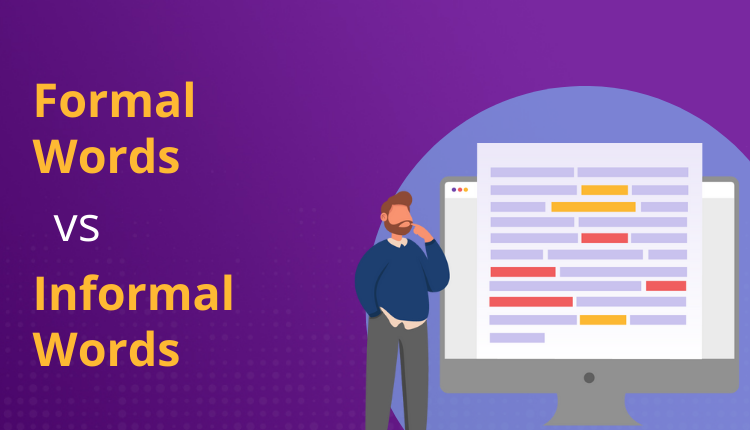Why Mastering Formal and Informal Words is Essential
Language is a versatile tool that adapts based on context, audience, and purpose. Whether you are writing a business proposal, delivering a university lecture, or engaging in casual text chats, your word choice can define your tone, build connections, and establish credibility. Understanding the difference between formal and informal English is crucial for students, business professionals, researchers, marketers, and content creators, ensuring effective communication across various scenarios. Tools like Trinka.ai, a free grammar checker designed especially for academic and professional writing, can help refine your language, correct grammatical errors, and enhance clarity to suit different communication needs.
What Are Formal and Informal Words?
Formal words are primarily used in professional, academic, or official environments. They feature complex vocabulary, a polite tone, and a strict adherence to grammatical rules, typically avoiding contractions and colloquialisms. Examples include:
- “Commence” instead of “Start”
- “Terminate” instead of “End”
- “Nevertheless” instead of “But”
Informal words, on the other hand, are used in casual conversations. They are friendly, relatable, often include slang, contractions, and simple phrasing. Examples include:
- “Wanna” instead of “Want to”
- “Hang out” instead of “Spend time”
- “Basically” instead of “Essentially”
Key Differences Between Formal and Informal Words
| Aspect | Formal English | Informal English |
|---|---|---|
| Vocabulary | Advanced, precise words (e.g., “utilize”) | Everyday phrases (e.g., “use”) |
| Tone | Professional, respectful | Conversational, casual |
| Contractions | Avoided (e.g., “I cannot”) | Commonly used (e.g., “I can’t”) |
| Colloquialisms | Avoided | Frequently included (e.g., “awesome”) |
| Usage | Legal documents, official reports, academic work | Texts, chats, emails with friends |
When to Use Formal vs. Informal Language?
Understand when to adjust your language:
1. Academic Writing
Formality is essential in academic contexts. Use precise, advanced phrasing: replace “This paper talks about” with “This study explores.”
Tool Tip: Tools like Trinka enhance academic writing by identifying informal language and refining it with scholarly alternatives.
2. Corporate Communications
Professional tone prevails in emails, corporate reports, or official presentations. For example, use “We appreciate your cooperation” instead of “Thanks a lot.”
3. Casual Conversations
Social media posts, texts, or casual emails lean toward informal tone. For instance, say, “Can’t help today” instead of “I cannot assist you today.”
Transitioning Between Formal and Informal Language
Switching effectively helps in matching tone and context. Here are examples showcasing the transition between the two registers:
- Formal: “I would like to express my gratitude for your assistance.”
Informal: “Thanks for helping out!” - Formal: “The above-mentioned issue will be resolved promptly.”
Informal: “We’ll fix that soon.” - Formal: “Research findings indicate additional investigation is needed.”
Informal: “Looks like more digging is gonna be needed.”
Practical Tips: Choose the Right Tone for Your Audience
- Know Your Audience: Address professionals with formality; friends or casual groups with a laid-back tone.
- Stick to the Medium: Use formal expressions in corporate emails; opt for casual language in texts or tweets.
- Blend Techniques: Semi-formal tones suit mixed audiences, e.g., hospitality blogs or customer communication.
- Practice Code-Switching: Adapt your language when shifting between formal meetings and casual chats, a valuable skill for modern professionals.
Advanced Tools for Language Style Enhancement
Switching between formal and informal English can be challenging for non-native speakers or professionals seeking polished communication. Platforms like Trinka simplify the process with versatile features, including:
- Grammar Correction: Fixes informal constructs for professional and academic writing.
- Vocabulary Refinement: Offers alternative advanced words or suitable replacements that align with tone.
- Tone Consistency Checks: Helps maintain uniformity across your document.
- Style Adaptations: Tailors language to fit industry-specific requirements.
For instance, instead of casually writing “kind of broad,” Trinka suggests alternatives like “relatively wide” or “somewhat extensive” in academic or legal contexts.
Common Errors to Avoid in Language Use
Avoid these mistakes for better clarity and precision when choosing between formal and informal tones:
- Mixed Registers: Introducing contractions in formal writing—e.g., writing “I’m” instead of “I am.”
- Overuse of Slang: Casual words like “awesome” or “cool” dilute professional impact in reports or presentations.
Why Learn to Balance Formal and Informal Words?
Being adept at both formal and informal styles strengthens communication skills, enabling you to:
- Build credibility in professional contexts
- Forge personal connections and relatability
- Communicate effectively across diverse scenarios
Mastering contextual language use boosts career growth, confidence, and interpersonal relationships. Platforms like Trinka grammar checker ensure that your writings whether academic reports or casual emails are polished, suitable, and engaging.

